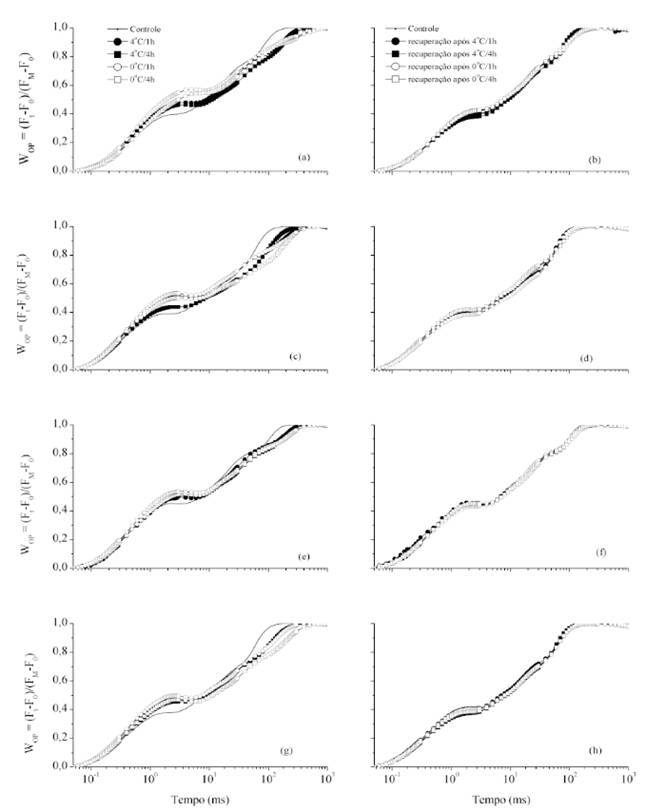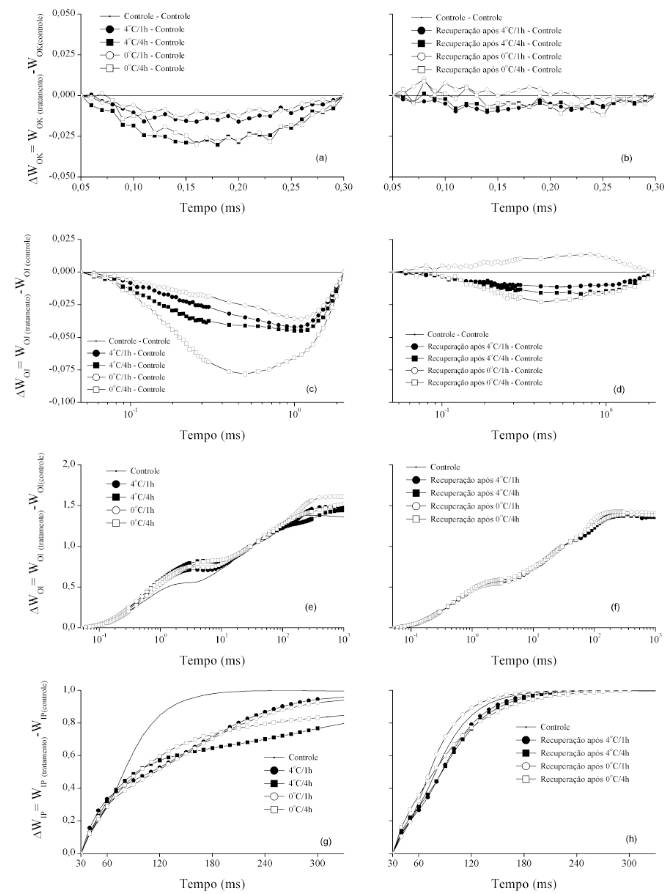The objective of this research was to study the effects of low temperatures on the photosynthetic apparatus of canola hybrids. Oilseed rape plants were grown in a greenhouse and, 50 days after sowing, placed in a growth chamber with absence of light which were subjected to different periods of low temperatures: 0 or 4oC during 1 or 4 hours. The kinetics of emission of chlorophyll fluorescence was evaluated. The hybrids showed the same behavior in relation to chlorophyll fluorescence in response to stress. The parameters of fluorescence related to the activity of the photosystem were largely affected in all treatments. The analysis of the kinetics showed temperature effects, mainly at the J step which reflects the accumulation of reduced plastoquinone and the I-P phase reflecting the reduction of end electron acceptors at the photosystem I acceptor side. It was concluded that the parameters more responsive to conditions imposed by cold are describing the degree of reoxidation of the final electron acceptor of photosystem II and activity of photosystem I
Brassica napus; JIP-test; fluorescence kinetics; stress















